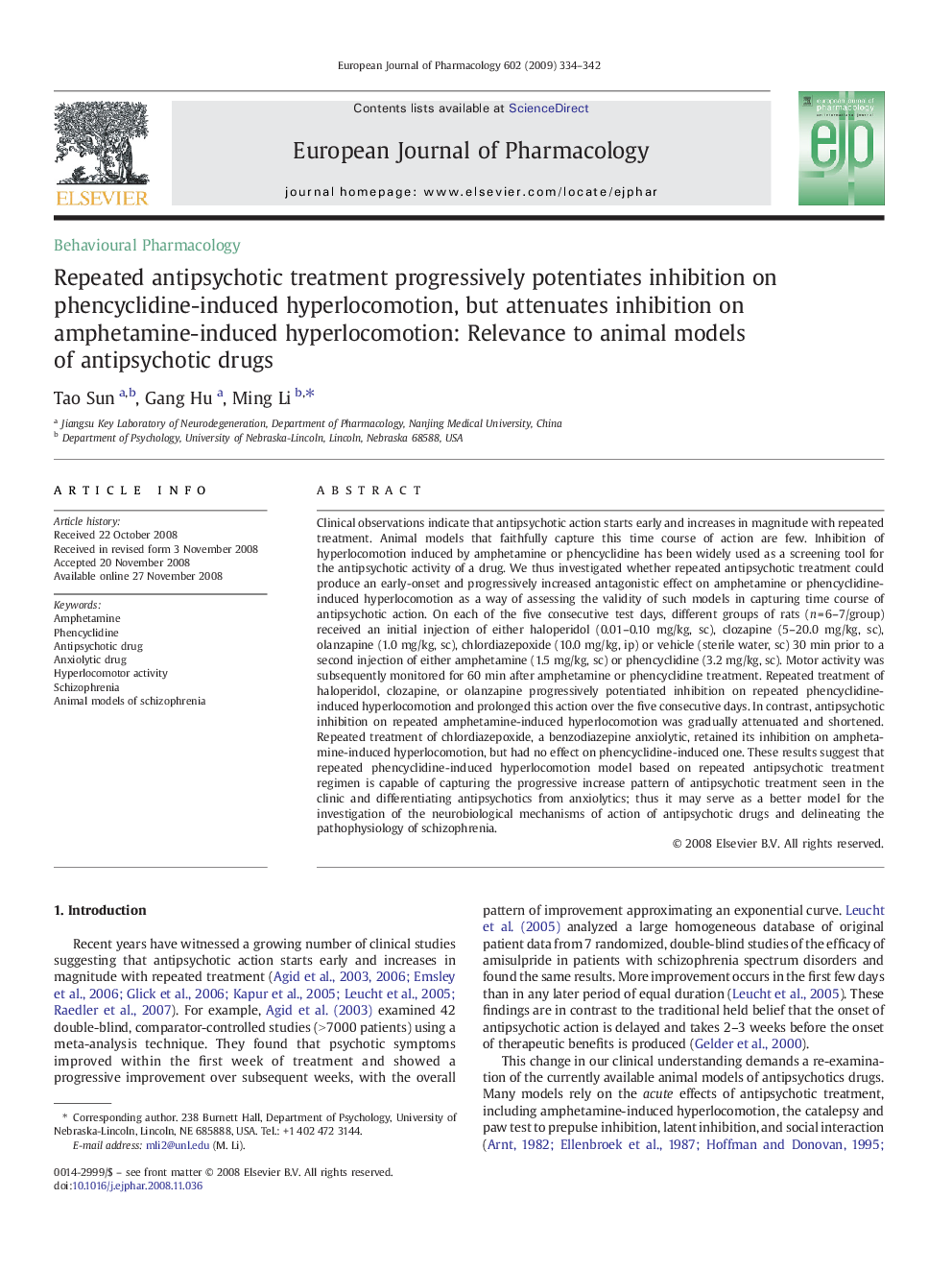| کد مقاله | کد نشریه | سال انتشار | مقاله انگلیسی | نسخه تمام متن |
|---|---|---|---|---|
| 2534519 | 1559093 | 2009 | 9 صفحه PDF | دانلود رایگان |

Clinical observations indicate that antipsychotic action starts early and increases in magnitude with repeated treatment. Animal models that faithfully capture this time course of action are few. Inhibition of hyperlocomotion induced by amphetamine or phencyclidine has been widely used as a screening tool for the antipsychotic activity of a drug. We thus investigated whether repeated antipsychotic treatment could produce an early-onset and progressively increased antagonistic effect on amphetamine or phencyclidine-induced hyperlocomotion as a way of assessing the validity of such models in capturing time course of antipsychotic action. On each of the five consecutive test days, different groups of rats (n = 6–7/group) received an initial injection of either haloperidol (0.01–0.10 mg/kg, sc), clozapine (5–20.0 mg/kg, sc), olanzapine (1.0 mg/kg, sc), chlordiazepoxide (10.0 mg/kg, ip) or vehicle (sterile water, sc) 30 min prior to a second injection of either amphetamine (1.5 mg/kg, sc) or phencyclidine (3.2 mg/kg, sc). Motor activity was subsequently monitored for 60 min after amphetamine or phencyclidine treatment. Repeated treatment of haloperidol, clozapine, or olanzapine progressively potentiated inhibition on repeated phencyclidine-induced hyperlocomotion and prolonged this action over the five consecutive days. In contrast, antipsychotic inhibition on repeated amphetamine-induced hyperlocomotion was gradually attenuated and shortened. Repeated treatment of chlordiazepoxide, a benzodiazepine anxiolytic, retained its inhibition on amphetamine-induced hyperlocomotion, but had no effect on phencyclidine-induced one. These results suggest that repeated phencyclidine-induced hyperlocomotion model based on repeated antipsychotic treatment regimen is capable of capturing the progressive increase pattern of antipsychotic treatment seen in the clinic and differentiating antipsychotics from anxiolytics; thus it may serve as a better model for the investigation of the neurobiological mechanisms of action of antipsychotic drugs and delineating the pathophysiology of schizophrenia.
Journal: European Journal of Pharmacology - Volume 602, Issues 2–3, 14 January 2009, Pages 334–342